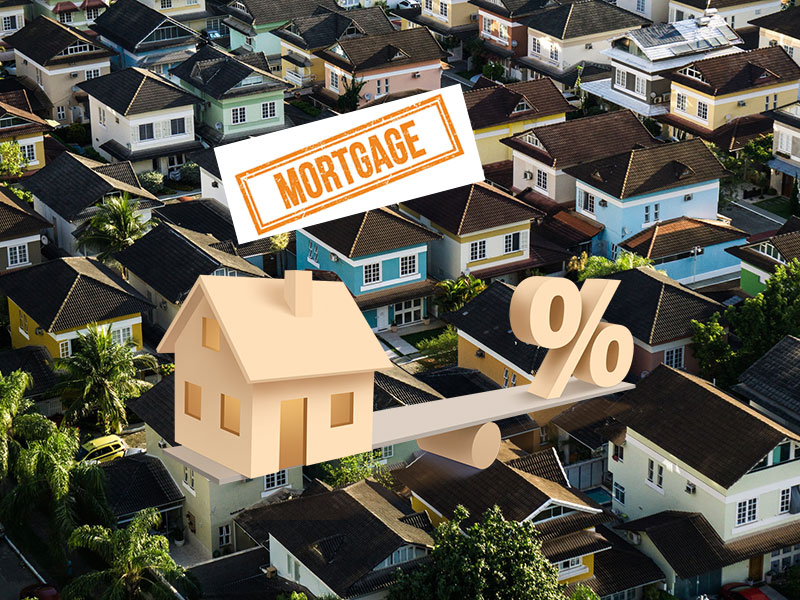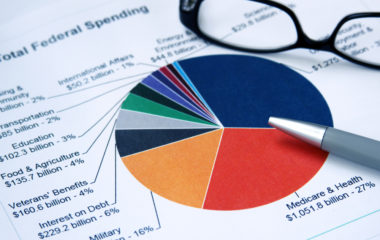Experts in the industry estimate that the 30-year rate on a fixed-rate mortgage will reach 4.8 to 5.5% by the end of 2022. In May 2022, the average was already at 5.27%, a 10-year high driven by rising inflation and increases in the Federal Reserve’s federal funds rate.
Mortgage rate forecasts from the first half of 2022 indicate that higher mortgage rates will likely slow home sales and reduce the rate of home appreciation in the coming months.

Table of Contents
Mortgage Rates 101
Most people know that the mortgage rate is the interest rate that a lender charges a borrower on a loan to buy a home. However, many consumers don’t understand what determines mortgage rates and the different factors that influence them.
The federal government plays a significant role in the rise and fall of interest rates through Freddie Mac and Fannie Mae. The two government agencies that control the fund’s lenders used to make mortgage loans. Here’s how it works:
- A bank, mortgage company, or other lender makes a mortgage loan to a homeowner.
- Freddie Mac and Fannie Mae buy bundles of these mortgages from those lenders and sell them to investors. The bundle is called a mortgage-backed security, sometimes abbreviated as MBS.
- The original lender takes the money it receives from Freddie Mac and Fannie Mae. And makes more loans, starting the cycle over again.
The price investors are willing to pay for mortgage-backed securities varies with the economic factors influencing risk and must be taken into account when making mortgage rate forecasts. Risk is a term that describes the probability that a loan will get repaid versus the likelihood that the borrower will default.
When the amount that investors are willing to pay varies, the profit that the lenders make also varies. When the dollars available to make loans to consumers fluctuate, it creates variability in the mortgage rate available to consumers.
The borrower’s situation factors into lending decisions as well. Consumers with better credit ratings get the best of the available rates. Borrowers with lower credit scores represent a higher risk to the lender and investors. So mortgage interest rates available to those consumers will be higher.
What Drives Mortgage Interest Rates?
Mortgage rates are complex elements determined by multiple factors. It includes Federal Reserve decisions, the general state of the economy, lender fees, and inflation. Further complicating things is that each potential borrower has a credit history, income, and other factors determining the available mortgage rate. Here is a further analysis of some of the contributors to mortgage rate forecasts.
Inflation
Inflation is a significant factor driving mortgage interest rates, as the two economic points are usually directly correlated. As inflation increases, consumers can buy less with the money they bring home. Rising inflation and reduced purchasing power influence the Federal Reserve’s decision-making process as it sets the federal funds rate.
The federal funds rate is the interest rate at which lending institutions can borrow money from the federal government to make loans.
When a bank or credit union has to pay more interest on the money it borrows from the federal government, less money is available to make consumer loans. When the demand for the loans exceeds the supply of dollars, then mortgage interest rates increase. The combination of higher mortgage rates and reduced purchasing power can sometimes slow home sales and reduce the growth of home values.
Federal Reserve
While its influence is profound, the Federal Reserve doesn’t directly set mortgage rates. Therefore, when the Fed announces a rate change, mortgage rates may not change by the same factor. For example, if the Fed follows through with a plan to increase the target federal funds rate by 50 points in June of 2022, mortgage rate forecasts may or may not predict that rates will jump that much.
One of the Federal Reserve’s primary responsibilities is to manage the growth of the economy of the United States. The Fed seeks a healthy rate of development that is manageable and controlled. The central bank considers 2% the ideal inflation rate for a stable economy.
In March of 2022, the consumer price index, one measure of inflation, was 8.5%, the highest point in more than 40 years and more than four times what the Federal Reserve considers optimal.
To tackle a high inflation rate, the Federal Reserve raises interest rates, making borrowing more expensive to lenders and consumers. As the cost of getting a loan rises, people borrow less, and the economy slows. The Federal Reserve raised the rate by 50 basis points in May of 2022. The most significant jump in more than 20 years. A signal that the government is moving aggressively to curb record inflation.
World Events
Throughout history, world events have influenced mortgage rate forecasts by driving investors into or away from mortgage-backed securities. Natural disasters, political instability, war, pandemics, and other global events tend to make investors turn to more stable, conservative choices, including mortgage-backed securities.
The Russian invasion of Ukraine historically would have driven mortgage interest rates lower as investors flocked to these safer options. However, the current instability in the region conflicts with record-high inflation, which is pushing mortgage rates upward as the unrest pushes them down. The battle between the two forces has kept rates fluctuating over the last few weeks, and the uncertainty over which wins out in the end continues.
Bond Prices
United States Treasury bonds, like mortgage-backed securities, are considered a safe and conservative investment. Bond prices and mortgage rates are closely related, mainly because the same investors are interested in both. People looking for a low-risk investment with a stable and reliable rate of return find the fixed rate of return offered by both bonds and mortgages appealing.
United States Treasury bonds, usually written for 10, 20, or 30 years, are backed by the government and, therefore, seem very safe, making investors more willing to accept lower rates of return.
Mortgage rate forecasts factor in that mortgages carries a slightly higher risk than bonds since mortgages are dependent on individuals to repay them. Because of this additional risk, mortgage investors may receive a higher rate of return. If the interest on bonds goes up, banks charge more for mortgage rates, and homebuyers must pay more in their monthly payments.
Higher monthly payments mean homebuyers buy less expensive houses, and home prices fall.
Mortgage Rate Trends and History
Between 1970 and 2022, mortgage rates have varied considerably. In the 1980s, they reached double-digit highs before beginning a steady decline over the next 40 years. In 2020, rates reached record lows due to factors related to the pandemic. Here are some pivotal points in the history of mortgage rates in the United States:
- 1971 was the first year that the government, through Freddie Mac, surveyed lenders to start tracking mortgage rates.
- In 1981, soaring inflation drove mortgage rates to a record high of 18.45%. Rates remained in double-digit territory for most of the decade.
- The 1990s saw a flurry of refinancing as rates returned to single digits.
- 2009 saw the lowest mortgage interest rate of the decade at 4.81%. The rate moved even lower in 2012 to 3.35%.
- To combat the impact of the pandemic on the economy, the Federal Reserve cut the federal funds rate to zero in 2020. Mortgage rates dropped to a new record low of 2.68% in December.
As the world reopens, mortgage rates are again on the rise, driven by soaring inflation and government efforts to reign it in. Disruptions to the supply chain and worker shortages add to the complicated task of mortgage rate forecasts in 2022.
Will Mortgage Rates Go Up or Down in the Next 90 Days?
While consumers may see some slight variations up and down from week to week during the summer of 2022, the overall picture seems to be one of increasing rates. During the first three months of 2022, Freddie Mac reports that mortgage rates rose 156 basis points, the fastest three-month increase since May of 1994.
As the Federal Reserve takes an aggressive stance against 40-year highs in inflation, interest rates will likely continue to trend upward through the end of the year. Most experts expect rates to stay above 5% for at least the next three months. For comparison, the average 30-year fixed-rate mortgage in June of 2021 was just under 3%.
Expert Mortgage Rate Forecast
For the second half of 2022, expert predictions for mortgage rates range from 4.75% to 7.0% for a 30-year fixed-rate loan and from 4.0% to 6.0% for a 15-year fixed-rate mortgage. Here is a sampling of mortgage rate forecasts for 30-year and 15-year fixed-rate mortgages, respectively:
- The National Association of Realtors predicts 5.5% and 4.8% for mid-year and 5.7% and 5.0% for late 2022.
- ATTOM Data Solutions predicts 5.75% and 4.75% for mid-year and 6.0% and 5.0% for late 2022.
- Knox Financial predicts 6.5% and 5.5% for mid-year and 5.5% and 4.5% for late 2022.
While these mortgage rate forecasts from the experts vary, they do share the view that rates will continue to rise through the remainder of 2022. The question of how high will interest rates go up remains to be answered.





